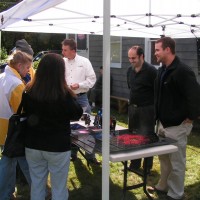October 4: AstroAssembly
Jets from Black Holes in Active Galactic Nuclei
Alan Marscher
Summary: Although black holes consume most of the matter that falls toward them, a small fraction gets heated and shot out along the poles in the form of jets having flow velocities very close to the speed of light. The most powerful jets are found in active galactic nuclei (AGNs), where the mass of the central black hole is millions or even billions of solar masses. I will describe recent observations at radio, optical, X-ray, and gamma-ray frequencies that probe the jets closer to the black hole than has been possible previously. Surprisingly, the data are consistent with prevailing theoretical models, according to which the jets are propelled by magnetic forces.
Bio: Alan Marscher joined the Boston University faculty in 1981 and served as Chairman of the Department of Astronomy from 1987-1997. Professor of Astronomy since 1992, he was the recipient of the 1998 Gitner Award for Distinguished Teaching in the College of Arts and Sciences. Marscher holds a Ph.D. in astronomy from the University of Virginia. A specialist in quasars, high energy astrophysics and multi-waveband astronomy, Marscher conducts research at observatories throughout the world as well as in space. He is the leader of the Blazar Research Group (http:/www.bu.edu/blazars) in the Institute for Astrophysical Research (http:/www.bu.edu/iar) at Boston U.
Marscher composes folk/pop songs in both English and Russian. A number of the songs have scientific and philosophical themes. Recordings and lyrics are available for listening or downloading at http:/www.soundclick.com/cosmosii.




